SpanTrack Lane Carton Flow Rollers
Efficient, durable, and dependable, SpanTrack Lane carton flow rollers drop into existing structures to create the ultimate carton flow rack system for manufacturing facilities and order picking operations.

The warehouse and fulfillment landscape has been in a steady state of flux in recent years. Supply chain disruptions and a surge in online shopping — both enhanced by the pandemic but continuing even today — have called for new warehouse optimization strategies. Labor shortages have created new challenges, while technological advancements have brought new opportunities.
Through it all, warehouse managers have had to adapt quickly and think proactively to keep pace with the changes. And, as we look toward another year, signs point to more of the same.
The rush of eCommerce orders will continue to press fulfillment centers toward new ways of organizing their warehouses, and data will need to be at the heart of all decisions.
What does this mean for your warehouse? Let’s dive into the biggest 2025 supply chain trends so you can prepare to face them head-on.
Before we glimpse ahead to supply chain predictions for 2025, let’s look back at what played out in the months leading up to it. In 2024, we saw several warehouse fulfillment trends in play:
As we’ll explore below, many of these same supply chain trends will continue to shape warehouse fulfillment strategies in 2025.

eCommerce has taken a front seat in retail sales in recent years, and that trend will continue in 2025. eCommerce sales are expected to exceed $6.86 trillion in 2025. Thus, the pressure on warehouse operators to fulfill more orders more quickly will only grow.
The swell of online orders will also continue to bring more complexity to inventory warehousing. Retailers and third-party logistics (3PL) providers are housing increasingly diverse product mixes, and this calls for more efficient omnichannel fulfillment solutions.
In this fast-paced, omnichannel environment, managers must look to smart eCommerce warehouse solutions that can scale with the rapid growth of online sales. Dynamic storage systems, such as UNEX solutions like SpanTrack and SpeedCell, are designed to accommodate diverse SKUs and accelerate inventory movement within the warehouse.
Labor shortages were a major disruptive factor in 2024, and they’ll continue to headline supply chain trends in 2025. One recent survey indicates that 37% of companies in logistics and supply chain management still face significant labor shortages. Meanwhile, according to a Gartner report, robots are expected to surpass frontline workers in manufacturing by 2028.
Yet, opting for robotics comes with its own steep costs, and warehouse operators would be wise to explore simpler solutions that complement and maximize any investment in automation. Dynamic storage solutions such as carton flow racks offer a “semi-automatic” approach, relying on gravity to move products toward the pick face. When paired with automated solutions like pick-to-light or robotic pickers, dynamic shelving can help teams accomplish more without relying on wholesale automation for every task.
Whatever the specifics, most warehouses will face a critical challenge in 2025: Fulfill more orders in less time with fewer workers.
Consumers’ cries for sustainability are only growing louder each year. A recent PwC survey found that the average buyer would pay 9.4% more for goods and services that were sourced and delivered sustainably — and that’s despite heavy inflation.
Given the growth of eCommerce, more customers are explicitly looking for online retailers that can showcase their commitment to sustainability. The onus is on warehouses to appeal to these eco-conscious consumers (not to mention meet ever-evolving regulatory demands) by making sustainability a priority throughout their operation. On one hand, that means retailers must prioritize highly visible changes such as using sustainable packaging and reducing carbon emissions from transportation.
There are subtler ways to produce sustainable results, too. Storage and picking systems like SpanTrack require no energy to operate and facilitate more efficient fulfillment processes to minimize waste in the warehouse. These and other dynamic storage solutions can also increase storage density by up to 60%, preventing warehouses from taking up more space (and thus using more energy) than necessary.

Speaking of space optimization — that’s another key move in response to the biggest supply chain trends for 2025. Demand for more space exploded during the pandemic, and rent prices soon followed suit. Now, warehouses are faced with the need to do more with less, consolidating inventory and making the most of a smaller footprint to curb overhead costs.
That’s an especially tall task in 2025 with SKUs proliferating in eCommerce operations. So, how can fulfillment centers come up with warehouse optimization strategies to keep their footprint in check?
The best option is to look toward high-density storage solutions that allow warehouses to utilize every inch of space — horizontal and vertical — for storage and fulfillment efficiency. SpeedCell, for instance, provides highly compact, dense shelving that can be moved for easy access, improving space utilization within the fulfillment center. In warehouses that require a lot of each picking with a variety of SKUs, and have products with low to moderate throughput, SpeedCell can create four times more pick locations compared to static shelves.
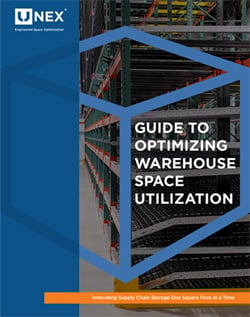
With such a confluence of challenges, today’s warehouses must dial in the efficiency of their operations like never before. It’s no easy task, but it means even the most minute changes can yield impressive results.
Yet, minute changes call for precise insights into the minutiae of the warehouse operation. That means data — and data analytics — will prove more critical than ever in 2025. It’s no surprise, then, that many warehouses are leaning on warehouse management systems (WMS) to improve efficiency in inventory management and order fulfillment.
In 2025 and beyond, advanced WMS will allow more operators to lean on predictive analytics for forecasting inventory needs and optimizing stock levels to avoid both overstocking and stockouts. These insights might include:
Additional insights may vary based on warehouse needs and the specifics of each fulfillment operation. With the right data and insights in hand, warehouse operators can find the best ways to optimize costs without overspending on fancy new technologies.

What do these 2025 supply chain trends and warehouse predictions mean for your operation? Here are five steps you can take to stay ahead this year:
Efficient, durable, and dependable, SpanTrack Lane carton flow rollers drop into existing structures to create the ultimate carton flow rack system for manufacturing facilities and order picking operations.
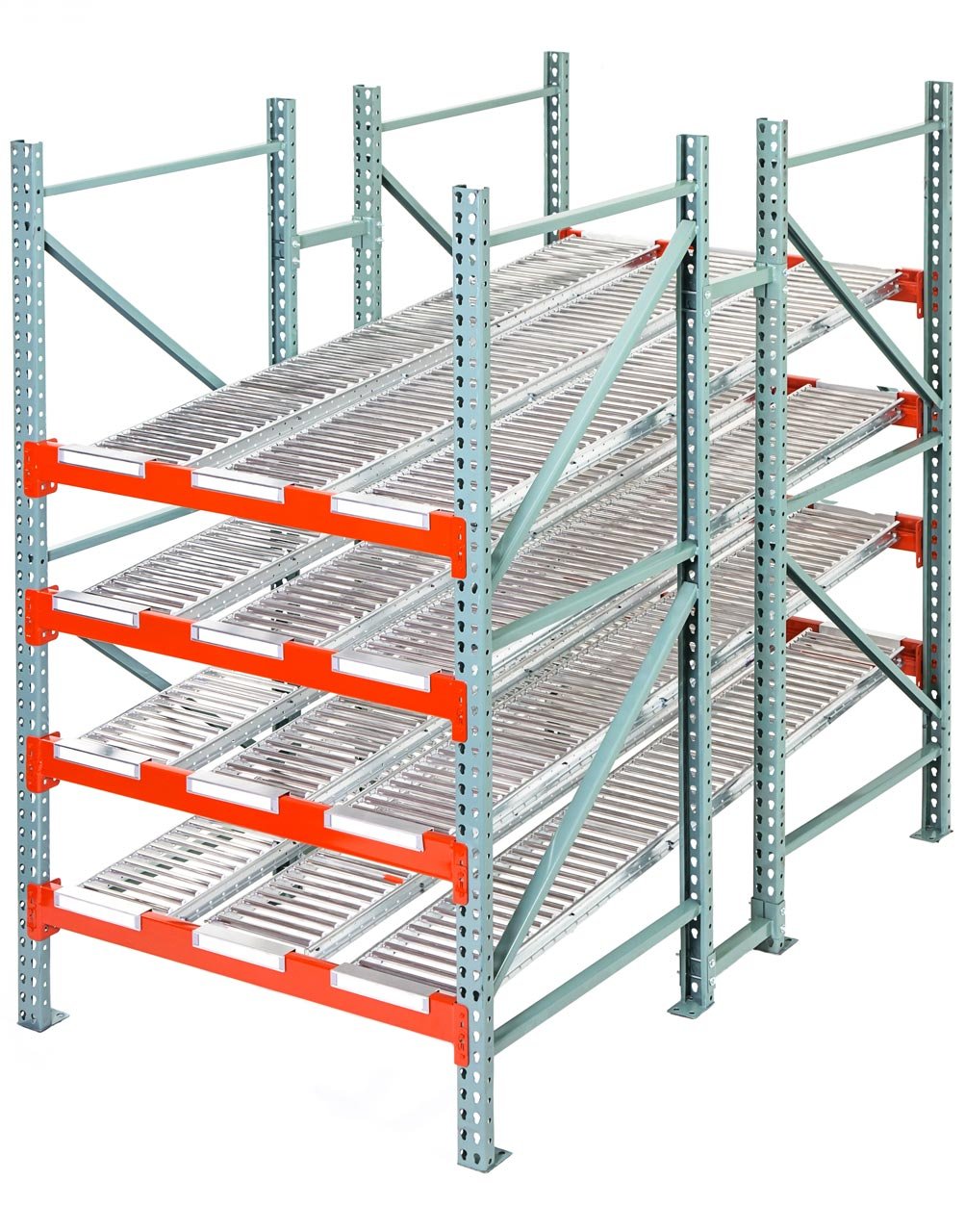
SpanTrack wheel beds are flexible carton flow beds that drop into existing structures to create the ultimate flow rack system for order picking operations, manufacturing facilities, and more.
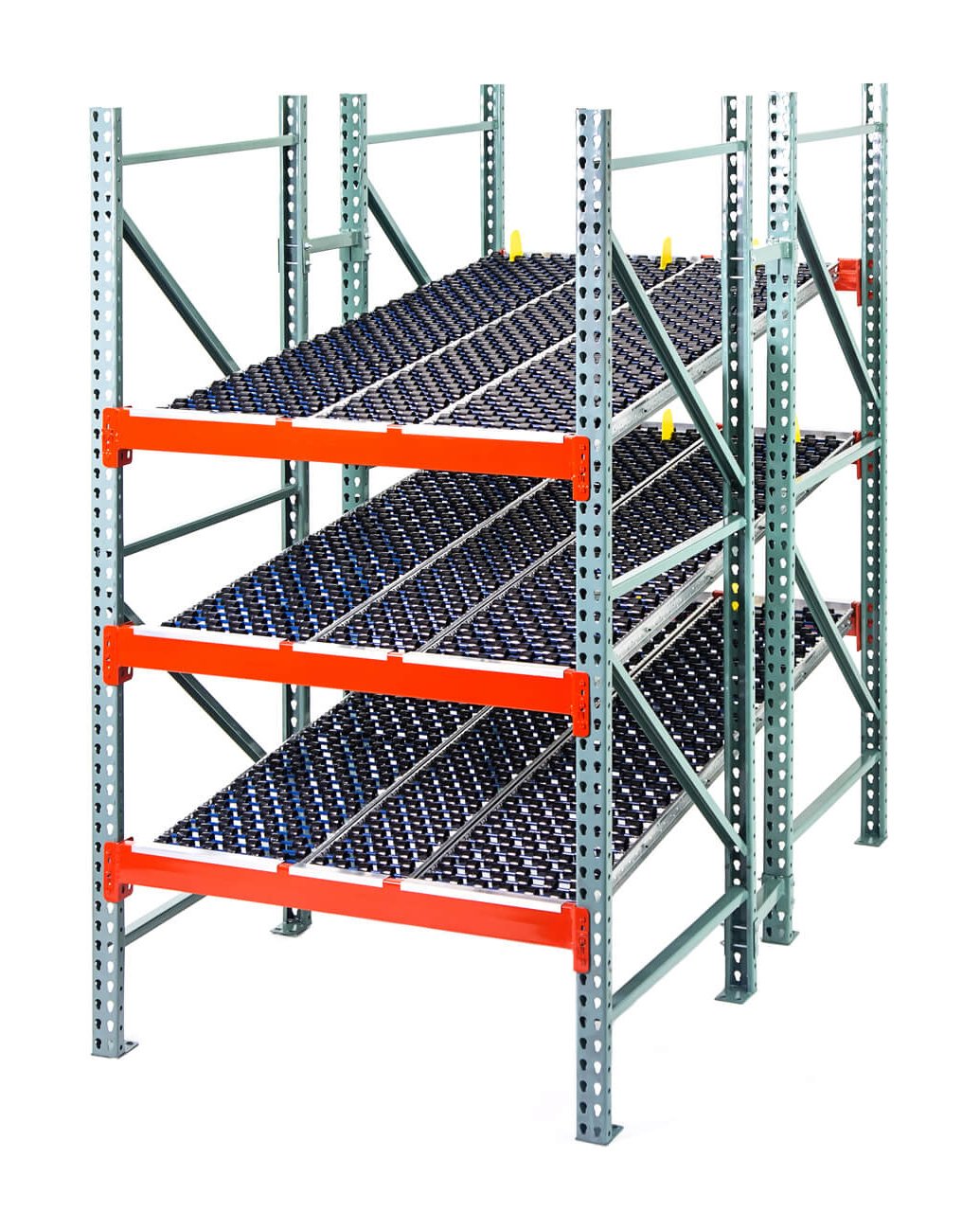
FlowCell modular flow racks are storage units and workstations designed for a facility’s unique operation. Our durable, portable flow racks maximize pick efficiency and space for lineside storage, sub-assembly stations, supermarket racks, modular mobile carts, and more.
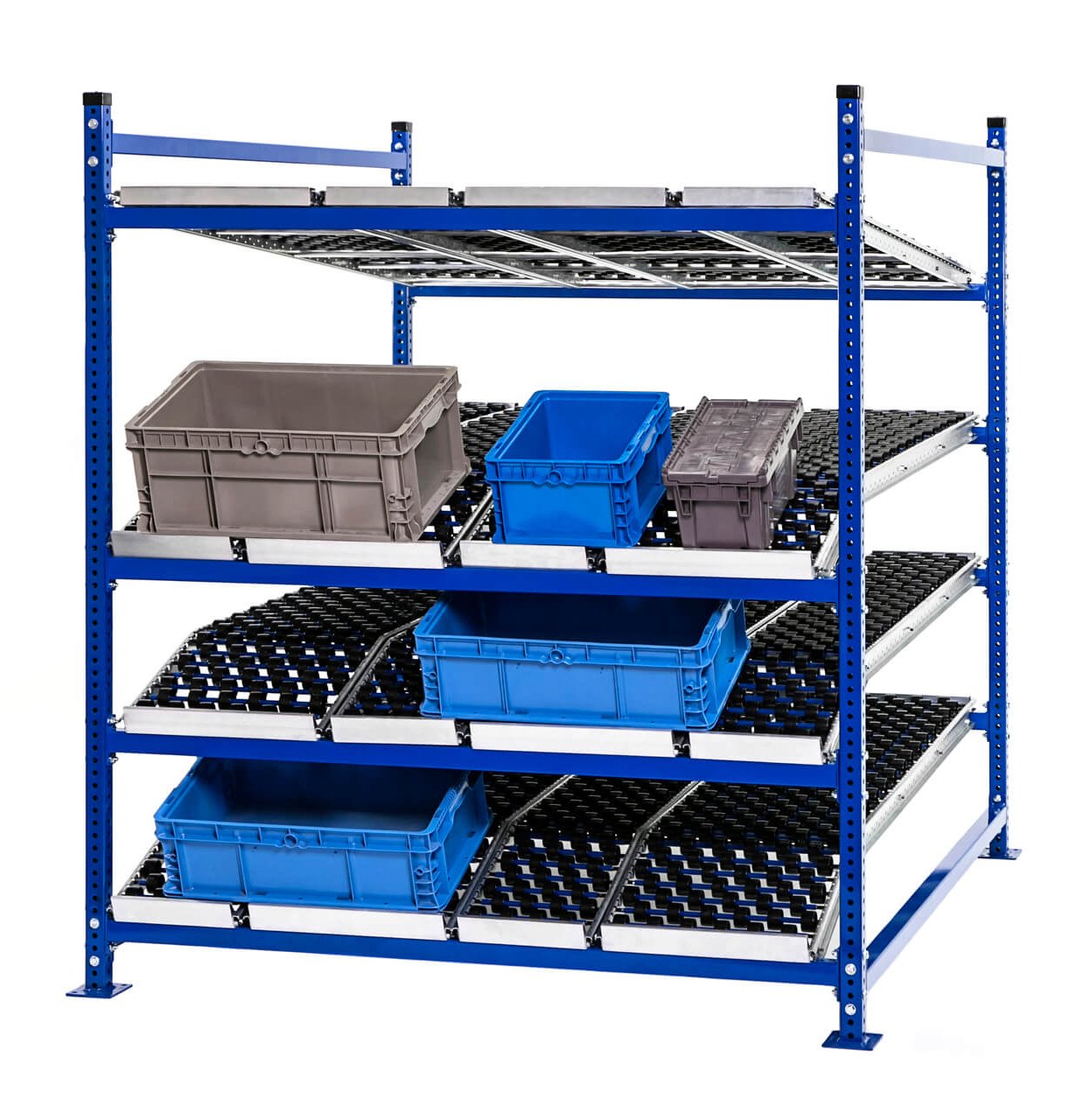
SpeedCell is a dynamic high-density shelving solution that maximizes space utilization within standard pallet racking, helping warehouse and backroom operations improve pick speed and accuracy for valuable time and cost savings.
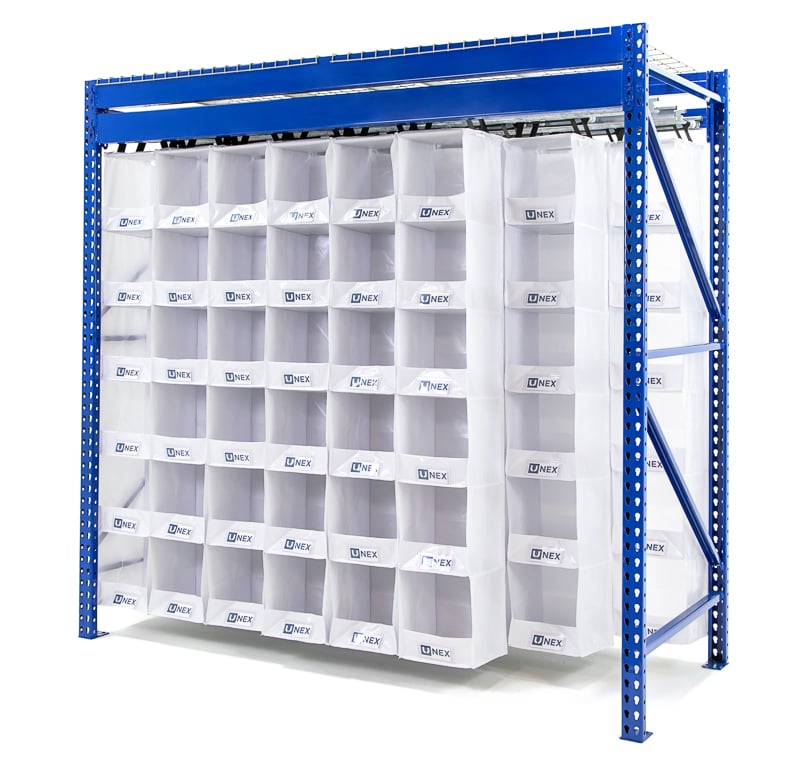
Mobilize order picking processes with a flexible, fast solution. Suitable for organizing restocking, order fulfillment, seasonal demands, and more, SpeedCartt is reliable even in the most demanding warehouse environments.
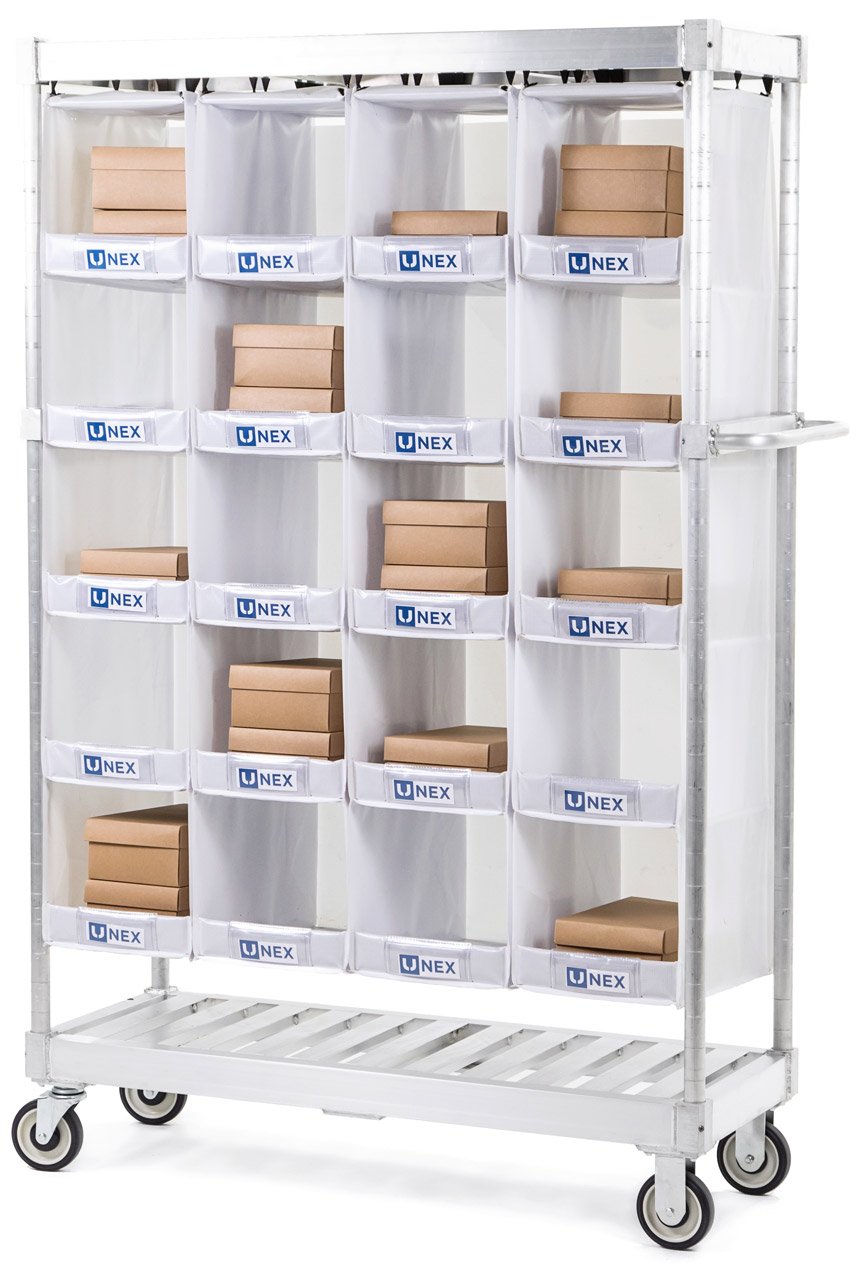
The world of supply chain logistics has grown increasingly competitive since the pandemic upended everything just a few years ago. Warehouse managers should expect these trends to continue in 2025.
Focusing on efficiency and effective space utilization is an essential task for any warehouse operation in this environment. Data must be at the heart of decisions, but the most fruitful changes often happen right where the action is: on the warehouse floor. Optimizing the use of space and streamlining the fulfillment process for workers will go a long way toward future-proofing your facility.
Contact UNEX today to learn how implementing dynamic storage solutions can help your warehouse stay ahead of the biggest supply chain challenges in 2025.